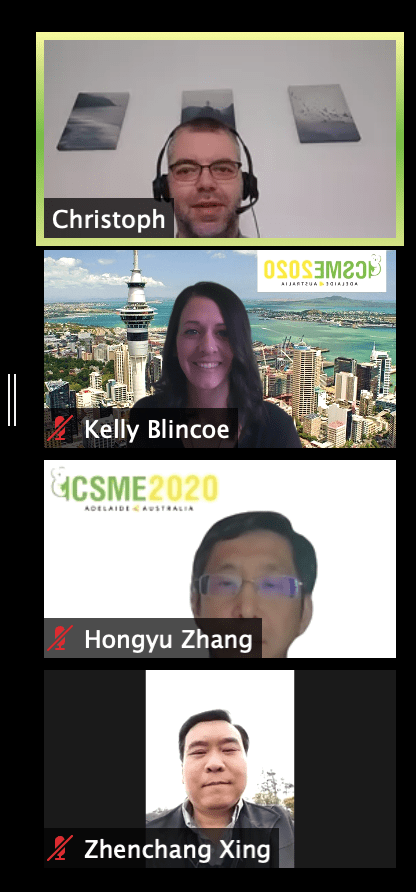Kelly Blincoe served as a Program Co-Chair of ICSME 2020, together with Zhenchang Xing from Australian National University. In this post, she shares some insights on the conference organization.
Due to the COVID-19 global pandemic, the conference was fully virtual, so we did not get to visit beautiful Adelaide, Australia. Despite this, we received a record number of submissions: 254 abstracts, which resulted in a total of 207 full paper submissions. After desk rejecting six submissions, 201 submissions were sent for review with each paper receiving at least three reviews from our outstanding program committee members. In the end, 58 submissions were accepted in the research track. Together with all of the other ICSME tracks, there were 107 presentations in the technical program. We also had 3 keynotes, 7 ask me anything sessions, 5 social events, meet the author rooms, a doctoral symposium, a most influential paper presentation, a ROSE festival, an awards ceremony, and opening and closing sessions. You can see the schedule here. We also had three co-located events (VISSOFT, SCAM, and DocGen2). It was a jam packed week, but lots of fun!
Planning a conference like ICSME is a massive undertaking. I accepted the invitation to serve as Program Co-Chair on 22 October, 2018 – so nearly two years of planning! We had an amazing organizing committee and program committee, which made the job much easier.
Virtual ICSME was held on Zoom and Slack. We had three time bands, so the conference ran for three hour blocks with large gaps in between the time bands. This helped ensure authors were not presenting in the middle of the night in their time zone and attendees also could keep to their normal sleep schedule. It also meant that everyone would have to miss one of the time bands since it would be running in the middle of their night. The general chairs, program chairs, and virtualization chair were all in New Zealand and Australia, so the Americas time band was not very convenient for any of us. We recruited some help from the steering committee members, who started the Zoom sessions for us in the Americas time band (thanks Sonia and Foutse!), but after two years of planning, we all found it difficult to miss one of the three time bands. I was lucky that New Zealand had just entered daylight savings time, so I could get up and catch the last hour of the time band without sacrificing too much sleep. Here are the general co-chairs and program co-chairs at the conference opening (still full of energy!)

The setup seemed to work pretty well. Looking back, I wish we had planned a few more short breaks into the schedule. It is not easy to watch Zoom talks for two hours! I’m glad we had shorter paper presentations. I know the authors had trouble sticking to the short time allotment, but the virtual setting makes it especially hard to stay focused during long talks. The ask me anything sessions were a great way to encourage discussions in the virtual setting. The meet the author rooms did not always work well with long periods of awkward silence, but some of them were filled with fun, engaging conversations. We need to find ways to get these conversations happening more regularly in the virtual conferences. The Slack workspace was not utilized as much as we had hoped for asynchronous discussions on the presented papers. It would be great to find more ways to encourage such discussions, especially for those who miss the paper presentations due to the time band scheduling.
During the conference, there were lots of discussion on virtual or hybrid conferences and their pros and cons. Thanks especially to our Diversity and Inclusion Co-chairs for organizing a Birds of a Feather session on this topic. It can be harder to make connections in virtual settings, and I missed seeing my friends from the software engineering research community. However, there are many benefits to not having to travel. It makes the conference more accessible to more members of our community, and it gave me a chance to still spend time with my kids during the conference week. Here is picture of me taking my kids for a bike / scooter ride in between the time bands.
I think it is important to try to step away from your normal office work during a virtual conference as much as you can, just as you would when traveling for a physical conference. It would be exhausting trying to attend all of the conference activities while keeping your normal academic schedule. Of course, the virtual setting means it is also possible to pop into just a couple of sessions if it is not possible to clear your normal schedule.
Overall, I think ICSME 2020 went pretty well, and we all learned a lot. A huge thanks to all of the authors, speakers, participants, the rest of the organizing committee, and the members of all of the ICSME 2020 program committees who helped with timely, constructive reviews and engaging discussions on all of the submissions. See you at ICSME next year!


Recent Comments